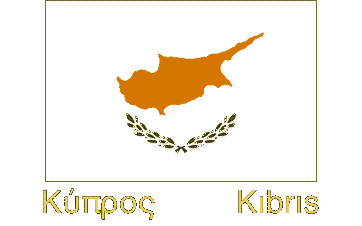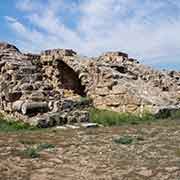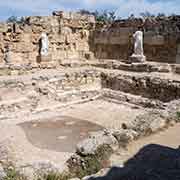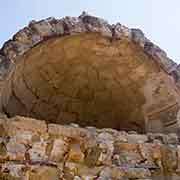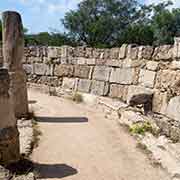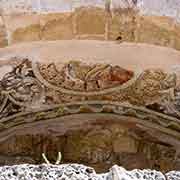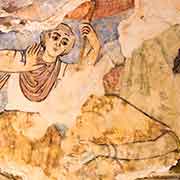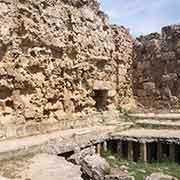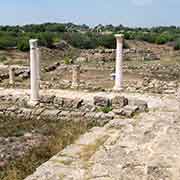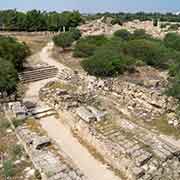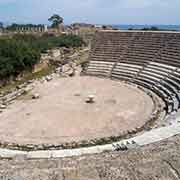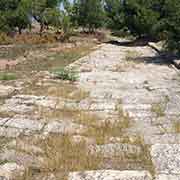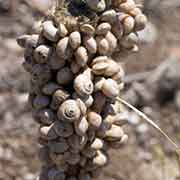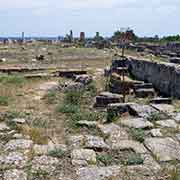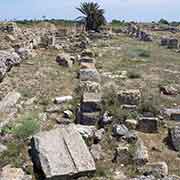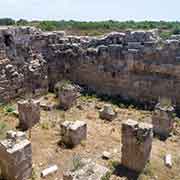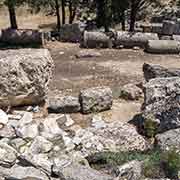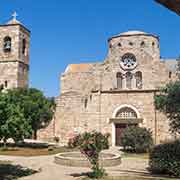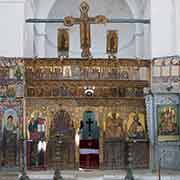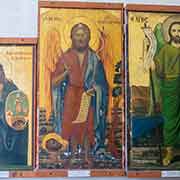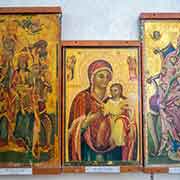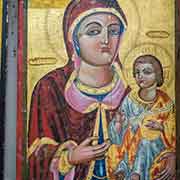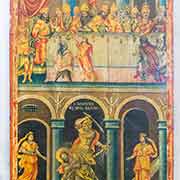Photos of Salamis, an ancient Greek city-state, Cyprus
Salamis, an ancient Greek city-state
Salamis (or Salamína, Σαλαμίνα, in modern Greek) was an ancient Greek city-state on the east coast of Cyprus, at the mouth of the Pedieos (Kanlı Dere) river, 6 kilometres north of the modern city of Famagusta. The site has been occupied as far back as the eleventh century BCE.
you may then send it as a postcard if you wish.
The ruins visible today date to the Roman period, around the 1st century CE. It is the cultural centre of the old city, with a gymnasium, a theatre, an amphitheatre, and public baths. Some mosaic fragments are still visible in cupolas that were roofing those baths. The hypocaust (underfloor heating system) can still be seen. The Theatre of Salamis is from the time of Emperor Augustus (31 BCE to 14 CE); it once could hold 15,000 spectators. Earthquakes destroyed much of it, but it has been partially restored.
There are the remains of two large 4th-century basilicas, the Kambanopetra and the St. Epiphanios Basilica, once the largest basilica in Cyprus. Like many Byzantine basilicas, it was destroyed during Arab raids in the 7th century. There are also still traces of a Roman temple, but not much of it remains.
Nearby, at the western edge of the Salamis necropolis, is the St. Barnabas’ Monastery, devoted to St. Barnabas, the patron saint of Cyprus who was born in Salamis. He is one of the founders of the independent Greek Orthodox church; the monastery and church date from the 1750s. Once the centre of the Cyprus Orthodox Church, it is now an icon museum, holding precious icons and paintings.


